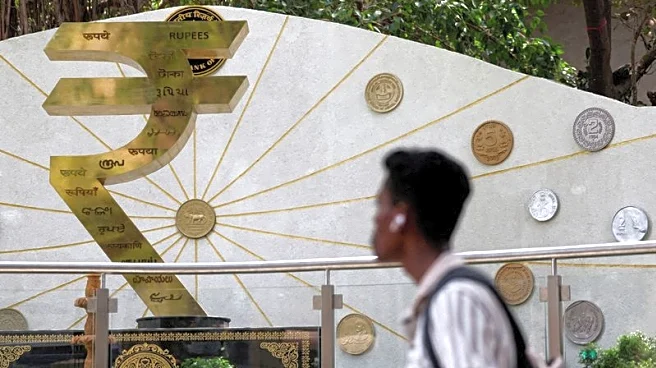By Nimesh Vora and Jaspreet Kalra
MUMBAI (Reuters) -The Indian rupee's recent tight moves suggest the central bank has reverted to its old playbook of using heavy market intervention to keep the currency
anchored to a level it deems appropriate, traders said.
Equity outflows, steep U.S. tariffs and a tightening visa regime pushed the rupee to a record low of 88.80 on September 30. However, over the last two weeks, the currency has traded in a band of under 30 paise, the narrowest since December, when Sanjay Malhotra took charge as the Reserve Bank of India chief.
Under Malhotra, the central bank allowed wider swings in the rupee's exchange rate, in contrast to the tight-control approach under his predecessor, which in turn prompted the IMF to classify the rupee as a 'stabilised arrangement' versus the previous tag of a 'managed float'.
Since Malhotra took charge, the rupee has weakened 4.4% against the dollar, moving within a broad 83.77 to 88.80 band.
The past two weeks, however, have marked a shift — the rupee traded in a narrow 29-paise range last week and just 15 paise the week before. This compares with average weekly swings of around 75 paise for most of the governor's tenure.
"It's back to the old ways where you scalp for a few paisa moves in a day," a trader at a Mumbai-based bank said, pointing to the change in rupee's price action.
The RBI did not respond to a mail seeking comment.
"It would appear that the RBI's reaction function has changed," Gaura Sen Gupta, chief economist at IDFC Bank, said.
"The RBI seems to be intervening more actively, not wanting the rupee to weaken past 89," she said, pointing out that a weaker rupee would hurt dollar returns for foreign investors and risk triggering further outflows.
Throughout last week, the RBI was seen actively defending the 88.80 level, the all-time low, with persistent intervention that helped the rupee recover to a peak of 88.51 on Friday.
The stepped-up intervention has crushed rupee volatility. The 10-day annualised realized volatility dropped below 1% this week — the lowest since November last year — highlighting how the central bank’s heavy presence in the market has muted price action.
"The current pattern of holding on to 88.70/80 level is perhaps building an expectation in the market to not speculatively test the central bank's defence," Dhiraj Nim, FX strategist at ANZ, said.
(Reporting by Nimesh Vora and Jaspreet Kalra; Editing by Mrigank Dhaniwala)












